Make your own camera out of materials around the house and take black and white photos with it.

You Will Need :
- A matchbox ! (standard matchboxes are usually just the right width for 35mm film)
- A new roll of 35mm film. Any type will do, but normal colour print film 100 or 200 speed works very well
- An empty roll of 35mm film with at least 1cm stub of film sticking out. Ask at your local photo labs, they normally throw away/recycle these.
- Some thin cardboard (the box the new film comes in is fine)
- An empty aluminium drinks can
- Black PVC electricians tape
- The plastic from a spiral binder, or any small piece of thin, curved plastic
- A fine sewing needle or pin
- Scissors
- A sharp craft knife
- A black marker pen
Process :
Remove the inner part of the matchbox, the match tray. Mark out a 24mm square exactly in the centre of the match tray. Alternatively, if you want standard format rectangular photos (some photo labs will find these easier to print) mark out a 36mm x 24mm rectangle. Carefully cut out the frame shape with a sharp knife, keeping the edges as neat as possible, or if you prefer, make it messy, it's up to you! Any rough edges and card fibres will appear around the edges of each photo.
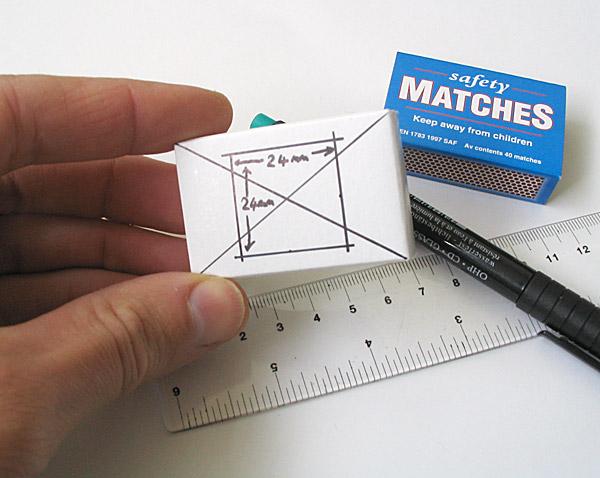
To reduce internal reflections in the camera, colour in the inside of the tray with a black felt tipped pen.
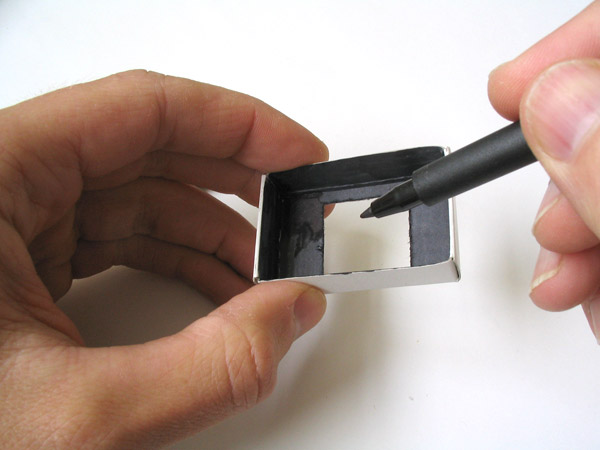
Try to colour the inside front of the matchbox sleeve black too.
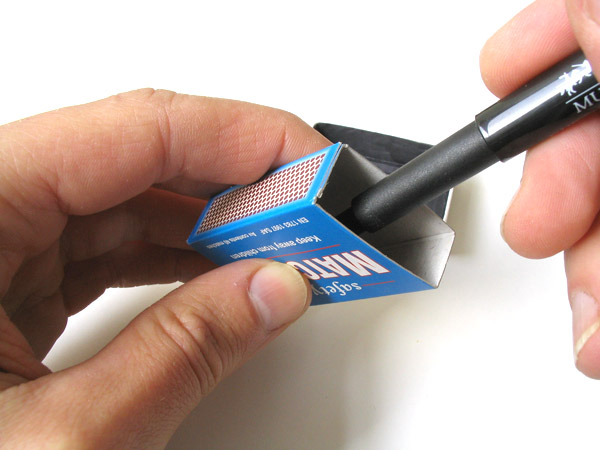
Exactly in the centre of the front of the matchbox sleeve, mark out a 6mm square. Carefully cut this square out keeping the edges as neat as possible to avoid fluffy fibres obscuring the image.
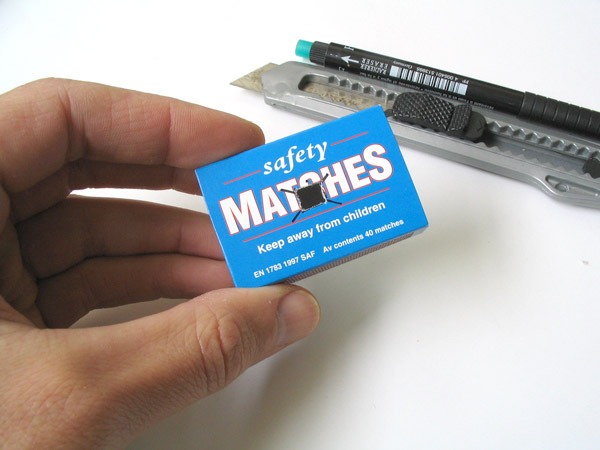
Cut out a piece of aluminium from the drinks can, about 15mm square. Place the aluminium onto some thick cardboard. Using the fine sewing needle or sharp pin, gently press into the centre of the aluminium. Twist the pin between your fingers while doing this so that it slowly "drills" a hole through the metal. Don't push down hard with the pin so that it goes straight through, the idea is to produce a very small hole with clean edges.
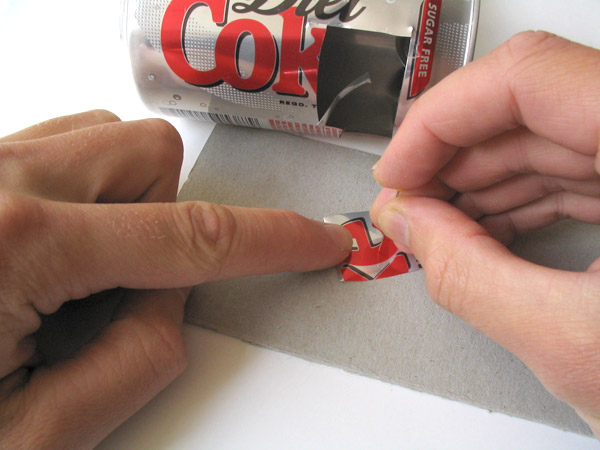
The ideal diameter of the pinhole is about 0.2mm, smaller is OK, larger and the images produced will be less sharp.
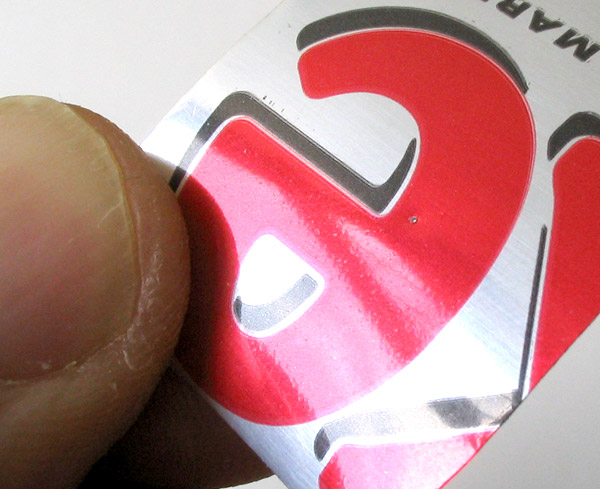
Colour the back of the pinhole black, again this should help reduce internal light reflections in the camera.

Place the aluminium onto the box so that the pinhole is exactly in the centre of the square hole in the top of the box.
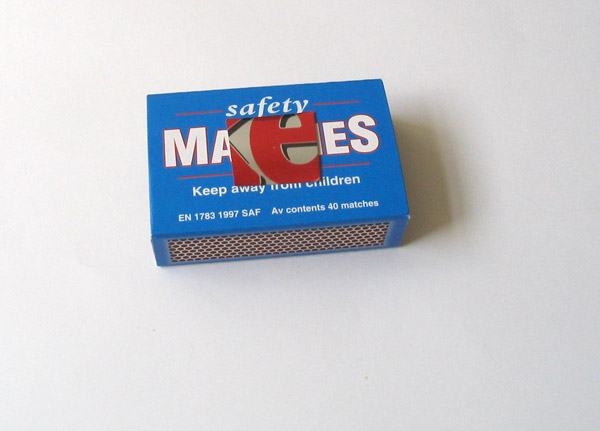
Tape the aluminium onto the box, securing all four sides.
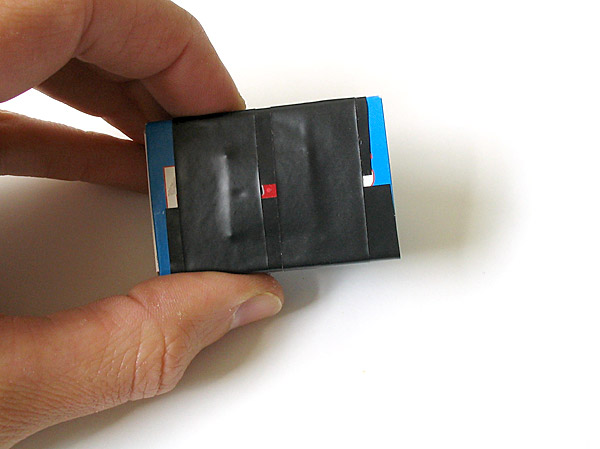
It's possible just to use a piece of tape across the pinhole to act as a shutter, but a sliding shutter can be easier to use. Cut two pieces of thin card, a square about 32mm, and a rectangle about 25mm x 40mm. In the square piece, cut out a 6mm square in the centre.

Place some black tape on one side of the rectangular piece to help prevent light leaks.

Place the square piece over the pinhole and tape down three sides, leaving a gap in the top into which the rectangular shutter card can slide.
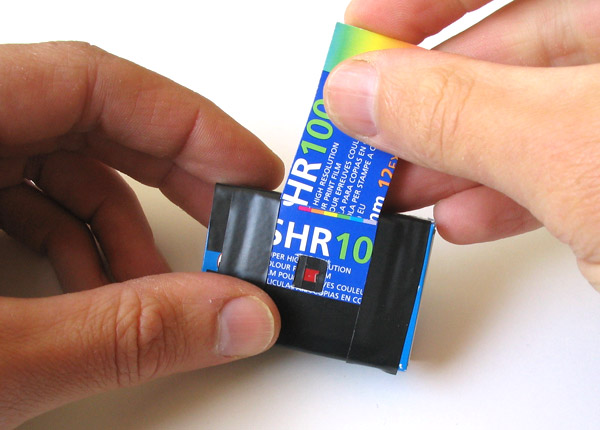
Check that the shutter can be pushed down to fully cover the pinhole.

Deciding how far to wind the film on between each photo can be a bit tricky. If you wind on too far, film is wasted. Wind on too little and you get double exposures. Here's a way to accurately wind on between each photo.
You need some fairly stiff plastic which is thin, springy and curved. The spine of a spiral ring binder is deal. Cut off one of the loops.
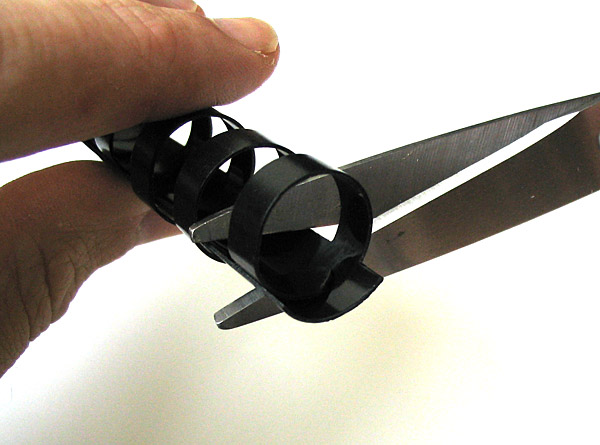
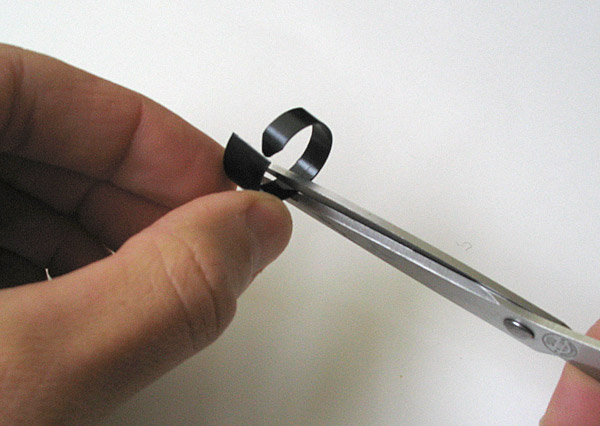
Take the new film canister. Place the pointed end of the plastic so that it just enters one of the sprocket holes of the film.
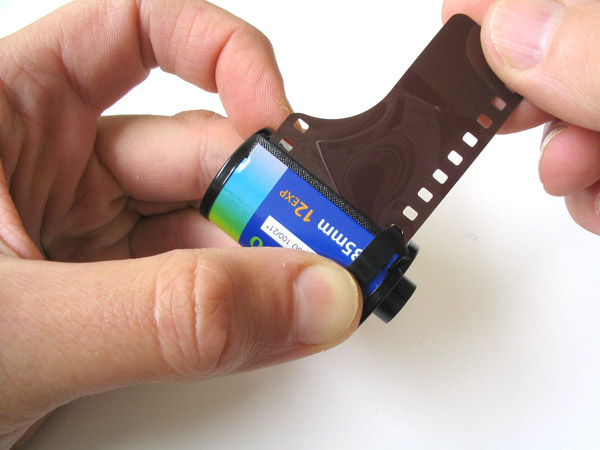
Tape the plastic to the film canister securely. Test the clicker by gently pulling out some film. The clicker should ride on the back of the film smoothly and make a click as it drops into the sprocket holes. It does? Good! It doesn't? Remove the tape, wind the film back into the canister again try repositioning the clicker slightly.
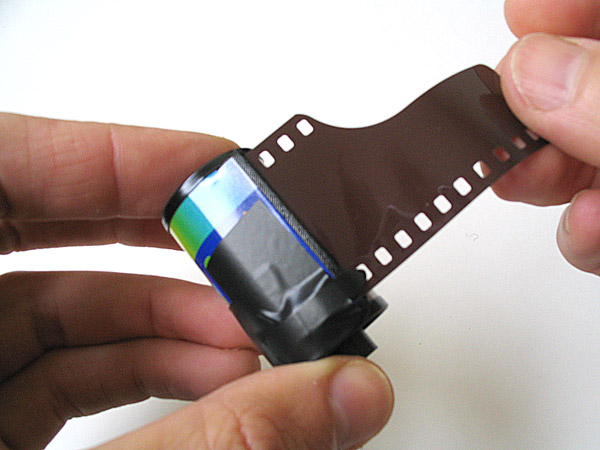
First, trim the leader off the film, cutting the edge as squarely as possible. If the film stub from the empy canister is not cut squarely across, trim it square too.
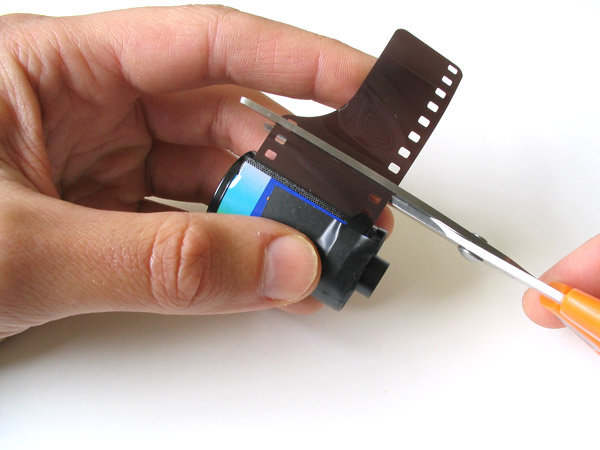
Pull out a little more film and thread the film through the matchbox. Make sure the emulsion side (non-shiny side) is facing the pinhole.
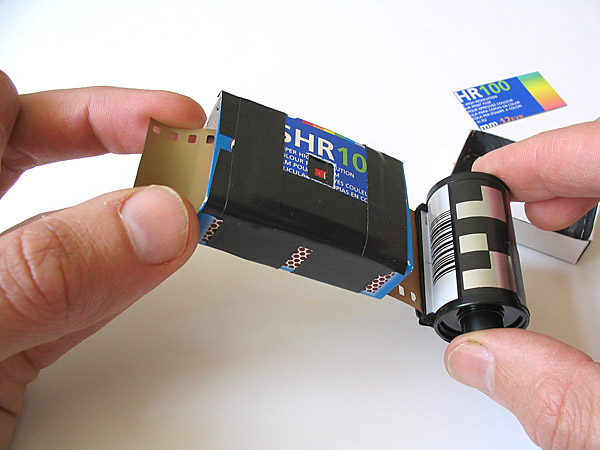
Using some clear sticky tape, splice the ends of the film together as neatly as possible. Try to make sure the edges are lined up together so the film can pass easily into the empty canister. Tape both sides and make sure the joint is secure.
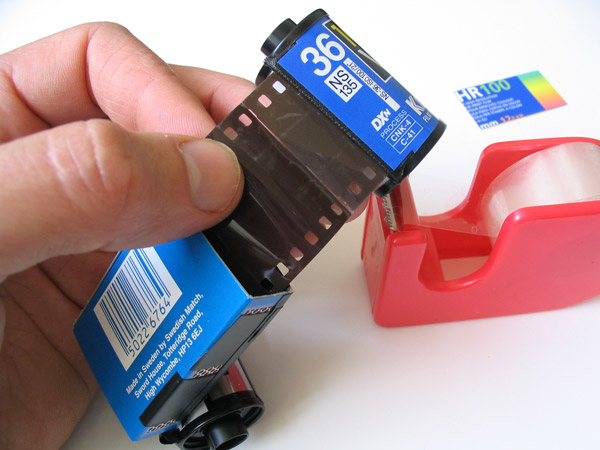
Slide the match tray back into the box.
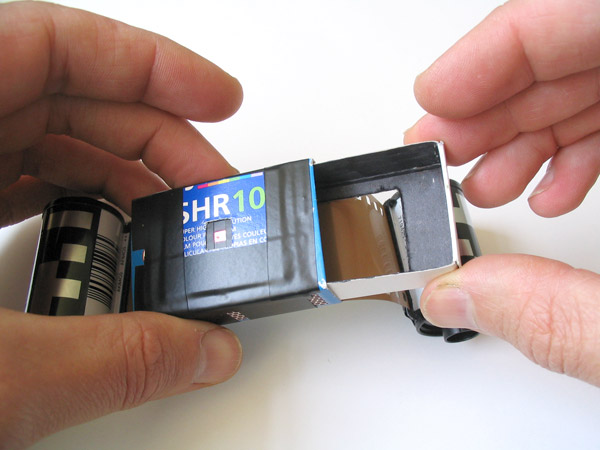
Turn the spindle of the empty film caniser so that the slack film is wound into it. Make sure the edges of each film canister are pushed up tight to the matchbox and no film can be seen.
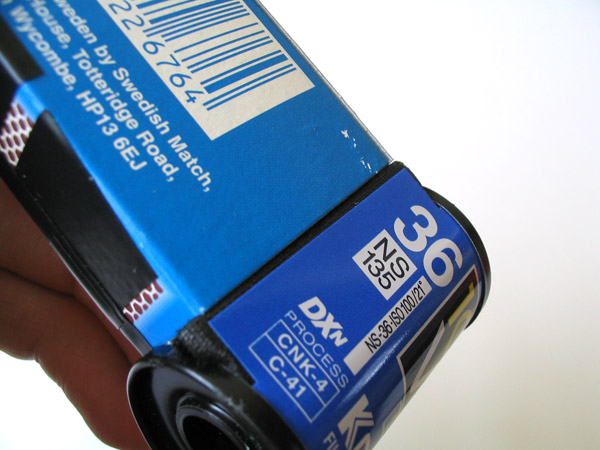
The film is now loaded, but needs to be made light tight.
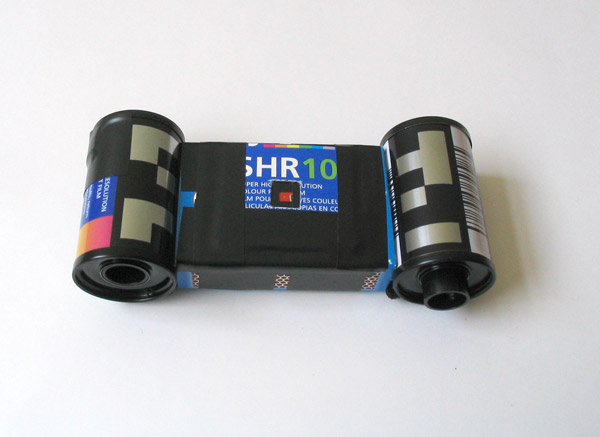
If you want your pictures to be free from lightleaks, it's very important that no light at all can get into the camera other than through the pinhole! Black electrical PVC tape is very effective at keeping out light.
The most important places to seal are between the film canisters and the matchbox. Place strips of tape down the front on both sides. Use two layers and make sure it is stuck down firmly all around.
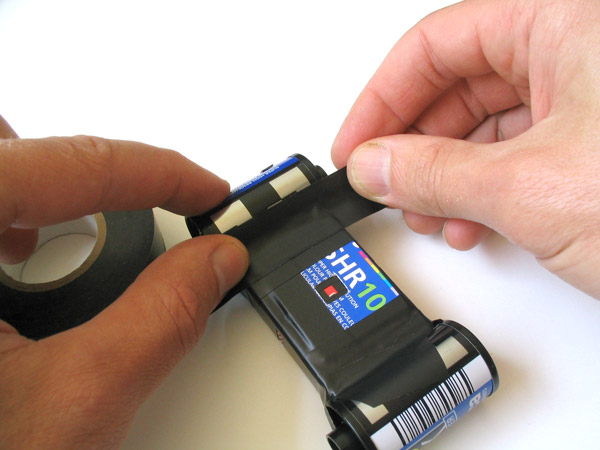
Pay attention to the ends of each reel. Add more tape here, trim around the spindles so that the tape adhesive doesnt stick and prevent the film being wound on. Again, use a couple of layers and check all around both joints to make sure they are totally sealed.
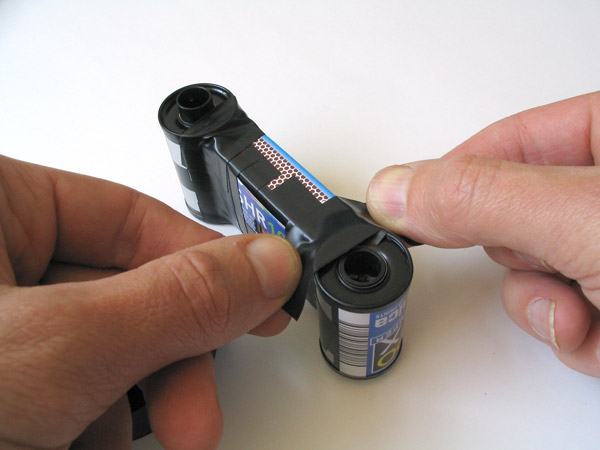
The cardboard of the matchbox will also leak a small amount of light, especially in bright conditions. This will give your photos a mottled red effect. If you don't want this, tape all over the back and sides of the box so that no cardboard is showing :
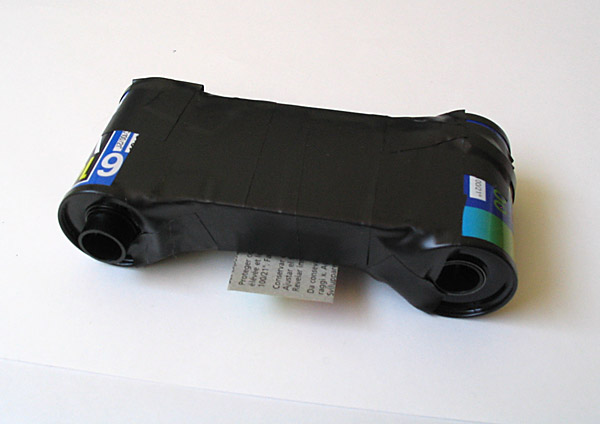
To make it easier to wind the film on, stick something into the top of the empty spool. Here I used the ring pull from the can,
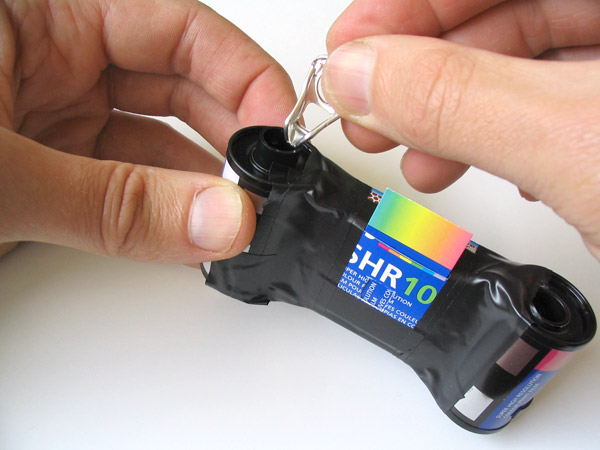
As you wind the film on, the film in the take up spool will tend to keep springing back. To keep some tension on the take up spool, place a little tissue paper on the base of the take up spool and tape over it. Don't make this too tight or it will be difficult to wind the film on.
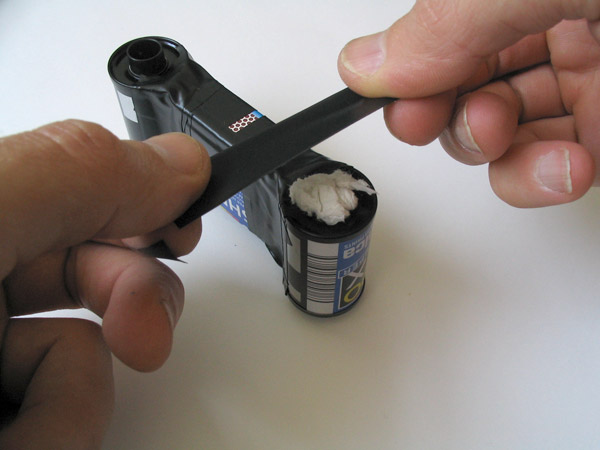

That's it! The completed camera is now ready to used. Make sure the shutter is closed. To wind the film on, turn the winder on the empty take up spool anticlockwise. Listen for the clicks. Count 6 clicks for each photo if using a 24mm square frame, 8 clicks if using a 36 x 24mm frame. DO NOT try to wind the film back into the other canister with the clciker in place - the clciker will probably tear the film.
Using the Camera :
The Matchbox Pinhole camera has an f number of about f90. There's no need to be very accurate about exposure times when using colour print film, use the following as a rough guide when using ISO100 or 200 film.
- Outside, sunshine: 1 or 2 seconds
- Outside, cloudy conditions: 5 seconds
- Indoors, normal room lighting: 5 - 10 minutes
When the film can't be wound on any more it's time to unload the film. You can just cut the box open, but if you are careful you can reuse the camera many times. If you are reusing the camera, carefully push back the tape to find the end of the clicker plastic, grasp with a pair of pliers, and remove the clicker. This prevents the clicker tearing the film as it is rewound. Seal the tape back down again, and wind the film back into the original canister. Remove the tape carefully from around this and cut off the film, leaving enough sticking out of the camera to splice your next roll.
The film can be developed by any normal photo lab. It might be a good idea to tell them that the frame spacing might be a bit irregular when you drop the film off - if the staff are helpful they might take a little more care when printing.
Don't worry too much about exposure times, experiment with the first roll and see what happens - you'll be surprised how forgiving film is! Most important of all, have fun !
0 comments:
Post a Comment